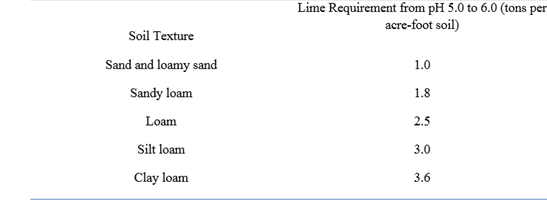Adapted from the article “Understanding and applying information from a soil test: Part 1” by Allan Fulton, Farm Advisor: Tehama, Glenn, Colusa, and Shasta Counties in the April 2010 Sacramento Valley Almond News
Why Test?
Soil testing helps plan to prevent or correct nutrient deficiencies, toxicities, or conditions that affect the available soil water before these problems affects growth and production. Soil testing is not a substitute for plant tissue testing, rather it is complementary. If a soil analysis indicates a deficiency or toxicity but a leaf test does not, a deficiency or toxicity may be developing in the trees. Conversely, if leaf analysis indicates a deficiency or toxicity but soil testing does not, soil testing may not show the roots’ response to the soil or the soil may have changed but the tree may still be catching up.
How to Test
There are two basic philosophies for sampling soils. When marginal soil is known or suspected, consider routine soil testing (at least every two or three years) to understand trends and guide long-term management. When confident that the soil is fertile, non-saline, and suitable for orchard crops, sampling is only necessary for troubleshooting. When management changes dramatically, such as a change from a higher quality to lower quality irrigation water, consider changing from troubleshooting to routine testing.
Regardless of which approach is taken, soil sampling must represent the orchard for the test results to be of value. Sampling needs to be undertaken using methods that consider irrigation system type and spatial and temporal soil variability. Unrepresentative sampling may be misleading and costly. Analyzing fertility and salinity at multiple soil depths can give insight about irrigation, fertilizers and soil and water amendments.
Saturation Percentage
The saturation percentage (SP) equals the weight of water required to saturate the pore space divided by the weight of the dry soil. Saturation percentage is useful for characterizing soil texture. Very sandy soils have SP of less than 20%; sandy loam to loam soil SP ranges between 20-35%; and silt loam, clay loam and clay soil SP range from 35-50+%. Salinity measured in a saturated soil can be correlated to soil salinity at different soil-water contents measured in the field. The SP soil-water content is generally about two times higher than the soil-water content at field capacity. Therefore, the soil salinity in a saturation extract is about half of the actual concentration in the same soil at field capacity.
pH
The pH of a soil measures hydrogen ion concentration (activity). Soil pH is closely related to bicarbonate concentration and can influence the availability of nutrients. It does not correlate with salinity. The pH of orchard soils in the Central Valley range from 5.5 to 8.4. Soil pH between 6.0 and 7.5 is ideal and attempts to change the pH within this range are unlikely to affect production. Soil pH below 5.5 and above 7.5 will begin to influence nutrient availability.
Less than 5.5 pH
Soil pH below 5.5 may result in calcium (Ca), magnesium (Mg), phosphorus (P), or molybdenum deficiency and perhaps excesses of manganese (Mn), iron (Fe), or aluminum (Al). Low pH soils are likely to benefit from liming. Table 1 outlines limestone rates to increase soil pH from 5.0 to 6.0. The rate depends on soil texture, volume of soil amended, and initial and desired soil pH. Increasing soil pH can be expensive. Costs can be reduced by applying the liming material in bands to limit the amount of soil being amended. The liming material should pass a 60 mesh screen to react more efficiently and must contain carbonate (CO3) or oxide (OH) to increase soil pH. Liming materials include dolomite, sugarbeet lime, burnt lime, and hydrated lime. Gypsum is a pH neutral amendment, and will not increase or decrease soil pH.

Table 1. Approximate rate of limestone (100 percent CaCO3 equivalent) needed to increase soil pH from 5.0 to 6.0 in an acre-foot of soil. Adapted from USDA Agricultural Handbook No. 18.
More than 7.5 pH
Soil pH above 7.5 will begin to immobilize Mn, Fe, zinc (Zn), and copper (Cu), particularly above 8.4. Soil with pH above 8.4 may benefit from applying acid-forming amendments such as sulfuric acid or sulfur to lower the pH. Effective rates of sulfuric acid pre-planting have range from 1 to 4 tons of acid per treated acre applied in a band to optimize cost and effectiveness. In established orchards, a single application of sulfuric acid in a band should not exceed 1,500 pounds per treated acre to avoid tree injury. If sulfur is banded it needs to be incorporated into the soil to be most effective. Alternatively, sulfuric acid may be applied through irrigation systems.


Leave a Reply